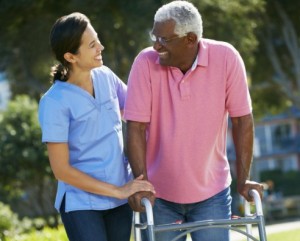Depression – AND its treatments – are fall risks
Here’s my latest article on McKnight’s Long-Term Care News:
Depression – AND its treatments – are fall risks
Feeling “down” takes on a wicked double-meaning for some seniors. Even conscientious providers could be unaware of it, let alone know what to do about it.
As McKnight’s Staff Writer Emily Mongan points out in “Depression treatments may increase risk of falls in SNF residents, study shows,” a psychosocial treatment for depression increased the likelihood of resident falls. I spoke with Suzanne Meeks, Ph.D., first author of the study, to discuss the problem and the results of her research.
Meeks and her colleagues studied the impact of the Behavioral Activities Intervention (BE-ACTIV) on depressed nursing home residents. They determined that the risk of falls in the treatment group was six times that of the control group, a statistically significant number.
Meeks told me all treatments for depression, including medication and behavioral interventions, increase the chance of falls. When an individual is no longer depressed, he or she has more energy to stand and walk, thus creating more opportunities to fall. If depression has immobilized them for some time, deconditioning may exacerbate the problem.
Meeks points out that more than 81% of her research subjects in both treatment and control groups were receiving antidepressants, suggesting that the behavioral intervention activated the residents more than the medication.
It’s important to treat people for depression despite the increased risk for falls because, as Meeks states, “depression is a fall risk.” Other researchers have found that the risk of falls increases when an individual has more of the following risk factors: depressive symptoms, antidepressant use, high physiological fall risk, and poorer executive function. Any two of these risk factors increase the likelihood of a fall by 55%. Participants with three or four risk factors were 155% more likely to fall — 155%!
The BE-ACTIV intervention
The BE-ACTIV model was quite successful in reducing depression, Meeks and her colleagues found, as described in an earlier article about their work. Study subjects in the 10-week treatment group were encouraged and assisted to participate in pleasant activities such as regularly scheduled group programs, in-room crafts and self-care such as haircuts. Compared to the “treatment as usual” control group, BE-ACTIV was “superior … in moving residents to full remission from depression.”
For the entire article, visit:
Depression – AND its treatments – are fall risks


